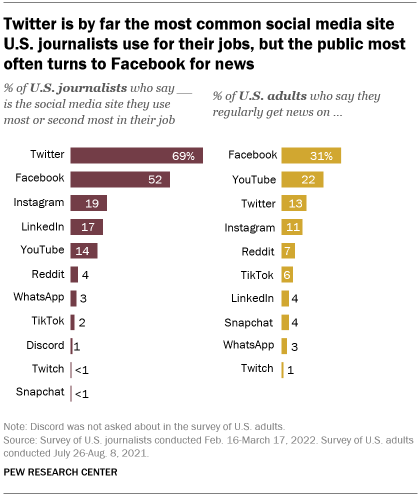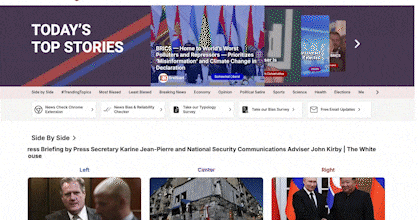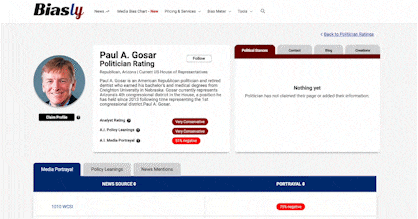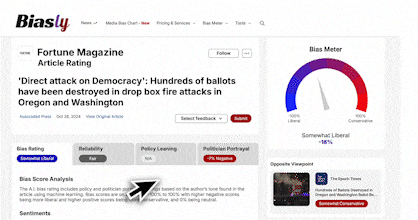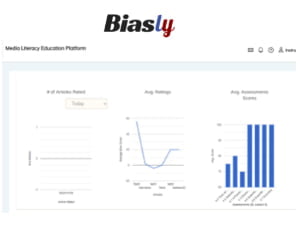
In an ever-growing diverse American society, journalists need to understand and learn about the differences in biases that are present in the news. Everyone has their own political biases including news journalists. Therefore, tracking and evaluating biases across the media can help journalists craft the perfect news story with the right amount of leaning while still remaining factual.
What is the Media Literacy Education Platform?
Biasly’s Media Literacy Education Platform is a platform that was created to help educators, students, journalists, news readers, and other community members learn how to rate and identify biases in the media, as well as improve media literacy. The main goal of rating biases and increasing media literacy helps empower everyone to become reasonable thinkers, allowing them to give better insights from the media.
Is the Platform Designed for Teachers Only?
The MLEP platform is not only used by educators; anyone can use this platform, especially journalists. It can help journalists provide more factual and unbiased methods of reporting. Additionally, it may even help them develop a more clear image for the audience that is reading the article.
How can Journalists use the MLEP Platform?
Just like educators and teachers who use the Media Literacy Education Platform to help them rate biases in the articles they read, journalists can do the same for both their own and peers’ articles.
The sources that journalists link to in their articles may be quite different from what readers are used to reading. The source material that they use may include surveys, research studies, “on the record” resources, and interviews. The main idea is to guarantee fairness and accuracy which are the two main pillars of proper journalism.
However, it isn’t always easy to ensure proper journalism. In fact, according to Pew Research Center’s recent survey, about 90% of journalists use more than 75% of social media for their research and writing. And around 70% of journalists have admitted that social media is one of the techniques that they use to gather their information and create an article for their audience. However, It can be challenging to tell whether the information they are using is biased or not without the proper bias education tools.
How Journalists Can Mitigate Bias
For everyday Americans, overconsuming certain media sources can be problematic and enhance biases. One thing journalists can do to alleviate this problem is to use technology to more quickly evaluate biases and the quality of their writing. One of the most important parts to consider in writing an article is to see how factual a journalist can make it. Biasly offers several tools to be able to do this. Here are a few:
Media Bias Checker
One of the most useful ways to recognize biases is to use Biasly’s Media Bias Checker. The media bias checker can help readers see if the article that they are using to gather information is biased or not. By entering the URL into the checker, several pieces of information appear such as the A.I. Bias Rating, policy leaning, the politician’s portrayal, an author score, and political portrayal analysis.
Media Source Bias Rating List
Another useful tool is the Media Source Bias Rating List found on Biasly, which provides an average bias score for each news source. We categorize the news into three parts (conservative, liberal, and moderate stances). By evaluating each of the sources’ stances, journalists will be able to see whether the source that they are gathering their information from is reliable or not.
Political analysts from each side of the aisle rate articles using our proprietary bias rating methodology to give the audience a better outlook into both conservative and liberal biases that are present in the media. Our A.I. algorithms and analyst scores can then be compared side-by-side by journalists. The rating works by having a bias scale. The scores are on a scale between -100% to 100%, with higher negatives being more liberal to higher positives being more conservative 0%.
MLEP Platform for Journalists
As with any journalist, fact-checking information is important. This process requires journalists to research each cited source to ensure that they are “reliable” by analyzing previous articles from the author of the source. However, that’s also quite time-consuming as a journalist. Everything has a deadline and it may be impossible to quickly verify facts without reliable technology. Using Biasly’s MLEP platform, journalists can quickly and more effectively research such biases and sources without skipping a beat.
Reading biased news can affect our day-to-day life and how we view our nation, community, and political sphere. The resources mentioned in this article can help us better know how to address political issues more effectively and create a better world for American citizens.























